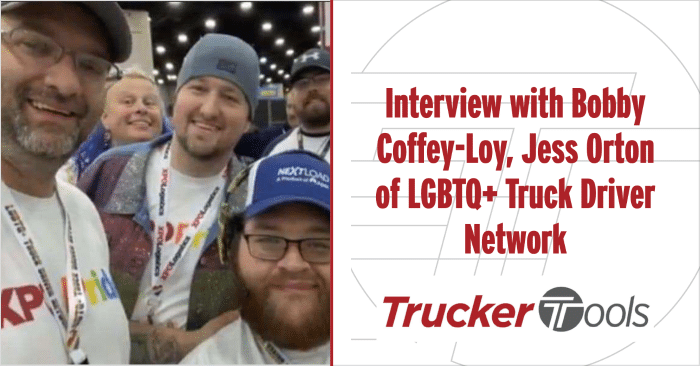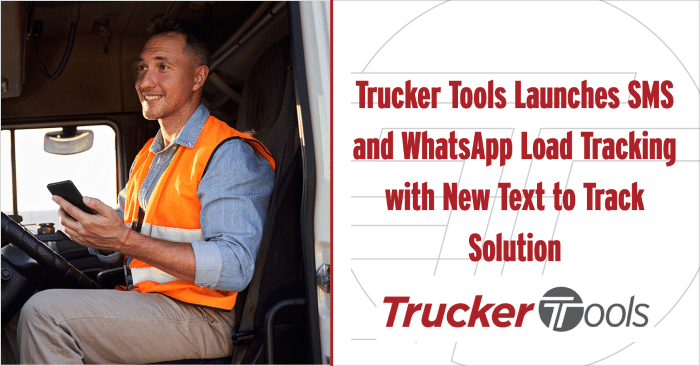Chelsee Patton of Riverside Transport on How Driver Retention and Recruitment Are Changing

If you’re the owner of a trucking company or if you work for a carrier, you already know that competition is fierce for truckers. According to the American Trucking Associations, the industry faced a driver shortage of 61,500 before the pandemic began. Since then, that number has increased by 30 percent to a shortage of 80,000 drivers. We recently spoke with Chelsee Patton, Riverside Transport’s Director of Recruiting, to learn more about how driver recruitment and retention are changing, given the driver shortage and tight capacity market. According to Chelsee, who has her CDL and experience as an OTR driver, recruiting and retaining drivers is all about having a strong, driver-focused company culture within your organization.
Read on to find out what else Chelsee had to say about how driver retention and recruitment are changing.
Home Time More Important to Drivers
“I think that today truck drivers are valuing their time with their family a little bit more and a lot of drivers kind of look at it differently,” Chelsee. “My husband is actually a driver and I think even for him he looks at it differently. There are lots of jobs that are paying really high pay that he could do, but you know that’s not intriguing for him because he wants to be home every night with his family, so he’s willing to take a job that pays a little bit less. There are a lot of drivers here that we hear want home daily jobs and so you have to be strategic with your jobs, your marketing strategy and your pay.”
Chelsee also said that if fleets want to be attractive landing spots for drivers and keep them, they have to get to know drivers and find out what’s most important to them. She said that she thinks old-school approaches to recruiting just aren’t going to work anymore. You have to be personable and help drivers get what they’re looking for, whether it’s more home time, pay or benefits.
“It’s important to maintain that human aspect to your business,” Chelsee shared. “Right now, if you’re not careful in my opinion, you really can dehumanize the driver, and if you do that, then you’re going to lose them totally. You have to keep in mind that this is a person who needs time off, they need breaks, they need compassion and they need understanding.”
“It’s important to maintain that human aspect to your business,” Chelsee shared. “Right now, if you’re not careful in my opinion, you really can dehumanize the driver, and if you do that, then you’re going to lose them totally. You have to keep in mind that this is a person who needs time off, they need breaks, they need compassion and they need understanding.”
Better Driver Pay Packages
“We all know that pay is definitely an important factor, so you have to offer top pay,” Chelsee said. “The industry has definitely changed. It used to be where you could spend a given amount of money and that money would get you a lot of drivers. Today from a cost-per-hire standpoint, you have to be willing to spend a little bit more. Also, advertising costs have gone up. Because the industry is in such a tight capacity crunch, it means that the rates are going to continue to rise and driver pay is going to continue to rise. If you’re not looking at what you’re doing with your pay packages, then you’re not going to be able to hire drivers. It’s that simple”
“We all know that pay is definitely an important factor, so you have to offer top pay,” Chelsee said. “The industry has definitely changed. It used to be where you could spend a given amount of money and that money would get you a lot of drivers. Today from a cost-per-hire standpoint, you have to be willing to spend a little bit more. Also, advertising costs have gone up. Because the industry is in such a tight capacity crunch, it means that the rates are going to continue to rise and driver pay is going to continue to rise. If you’re not looking at what you’re doing with your pay packages, then you’re not going to be able to hire drivers. It’s that simple”
Chelsee also suggested that recruiters consider paying drivers sign-on bonuses. Riverside Transport offers lucrative sign-on bonuses that pay out quickly to incentivize drivers to remain with the company. The company also has a day care center at its Kansas City location for local drivers who are in need of childcare.
Trucking Companies Must Be More Driver-Focused To Stay Competitive
“I think it’s always about the company culture,” Chelsee said in regard to driver retention. “If you have a culture that is not geared towards your drivers as the number one factor, you’re going to have a hard time retaining drivers. Drivers face so many problems every single day and it may seem small to you, but when you add up 25 problems in a day, it’s very challenging. You know, it’s you go pick up a load and you’ve got a mudflap that is missing. That doesn’t seem like that big of a deal, but it really can be. Have you equipped yourself with a maintenance department that is going to be receptive about a driver calling in or is your driver going to get a person on the other end of that phone call with an attitude who’s unwilling to help them? Culture —that’s got to be number one, in my opinion.”
Chelsee also shared that in her experience, you must show drivers that you value them and the work that they do instead of treating them as “just this person that drives an 18-wheeler.” She shared that every driver is different and that those hiring drivers have to cater to what each individual driver wants.
“If you’re doing that then you’re doing something that is going to help you recruit and retain drivers,” Chelsee advised. “If you’re not doing that, you’re really going to struggle. You might be able to deliver freight in the short term, but in the long term I don’t think it’s going to go well for you.”
To learn more about Riverside Transport Inc., visit https://riversidetransport.com/home.
To discover how our carrier portal can help your carrier business, read Trucker Tools Launches New Version of Free Software Platform for Carriers.
To download the Trucker Tools app, visit https://www.truckertools.com/carriers-toolkit/.





